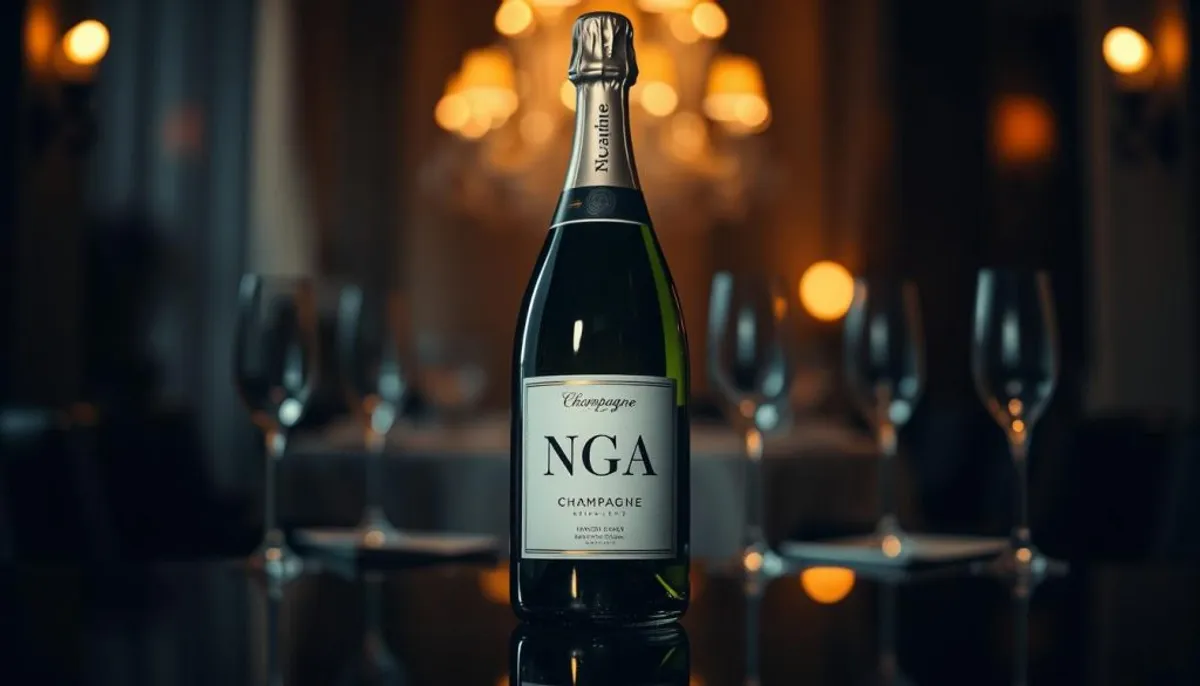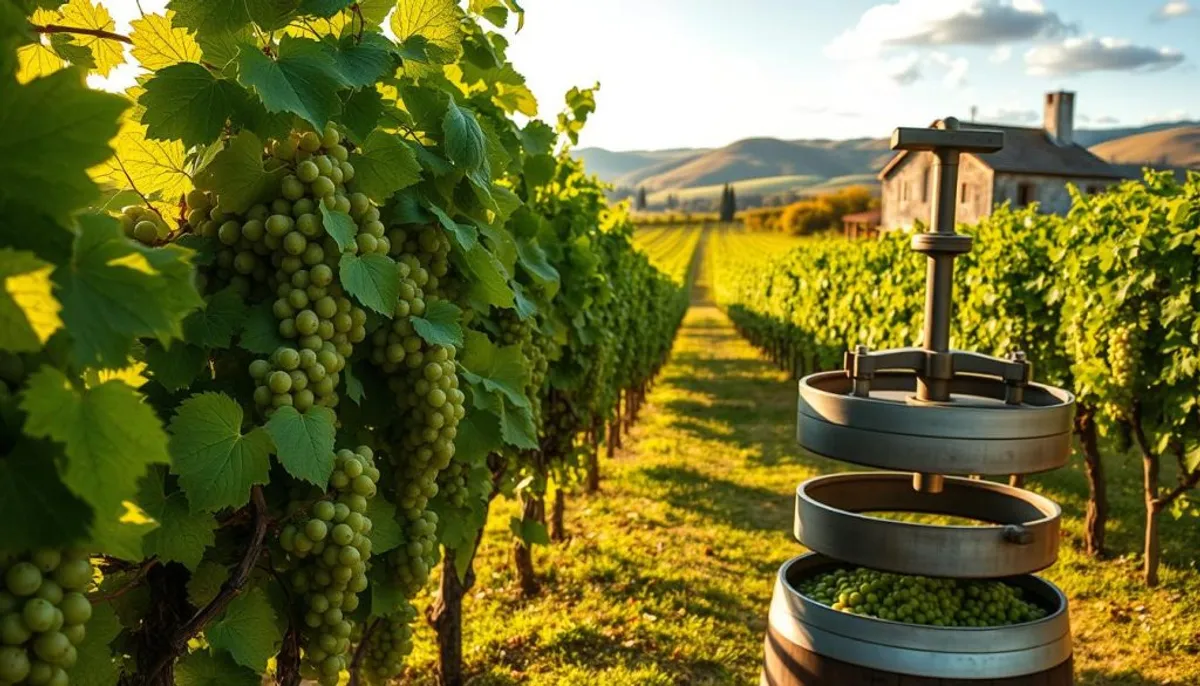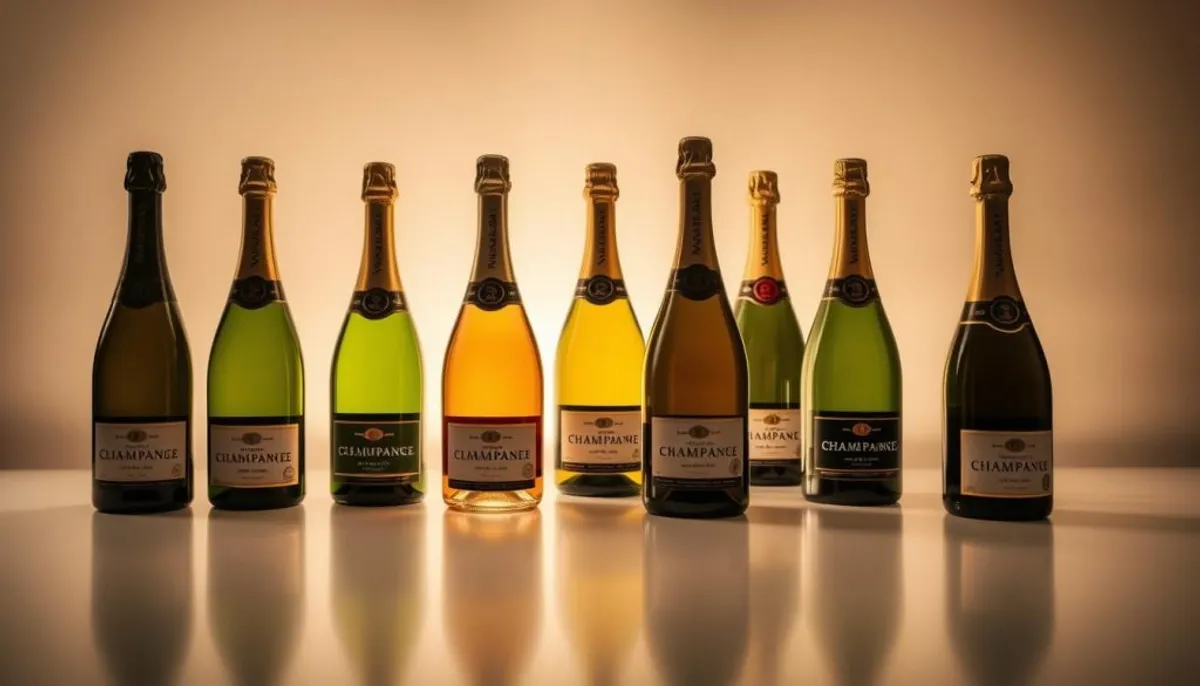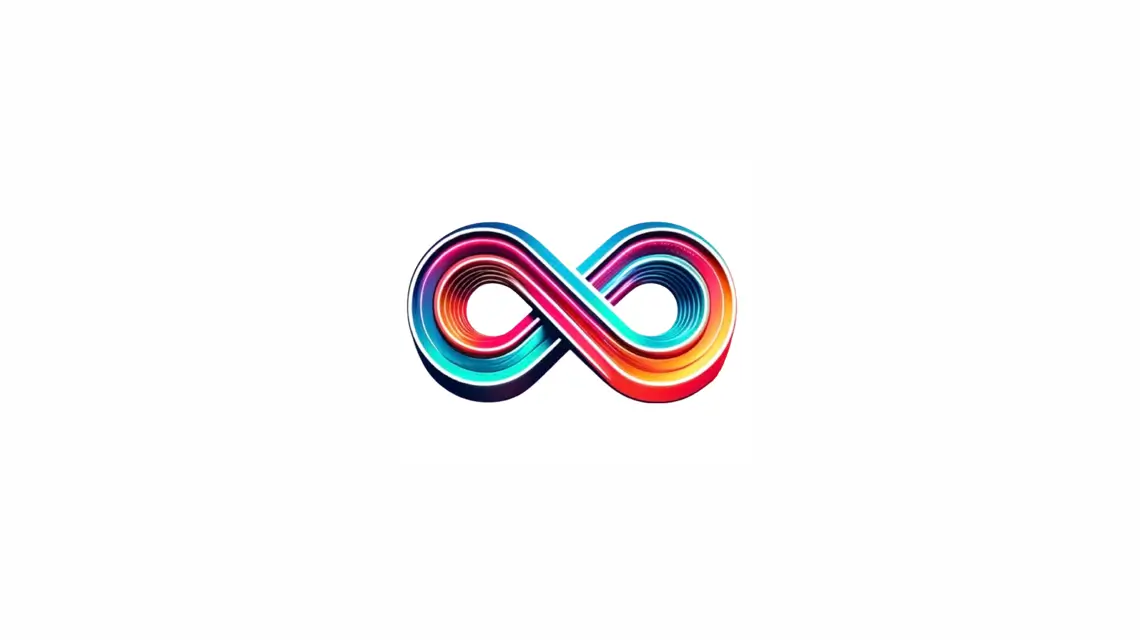Welcome to the world of Champagne NGA, a realm of exquisite French wine. This guide aims to enhance your understanding of this celebrated beverage. Whether you’re new to sparkling wines or a seasoned connoisseur, we offer insights into Champagne NGA.
Our exploration delves into Champagne NGA’s rich heritage and contemporary production techniques. We aim to unveil the essence of this bubbly, highlighting its unique flavors. Discover why Champagne NGA is a global symbol of celebration.

Veuve Clicquot, a renowned Champagne house, recently celebrated its 250th anniversary. This milestone underscores the longevity and prestige of Champagne. Imagine savoring Champagne on a luxury train journey, such as the Eastern & Oriental Express’s Wild Malaysia trip, priced at $3,140 per person. This experience epitomizes opulence in travel.
Champagne transcends its association with grand occasions. It’s ideal for commemorating both significant and intimate moments. Whether it’s a milestone anniversary or a joyous birth, Champagne NGA is the perfect choice to celebrate life’s milestones.
Key Takeaways
- Champagne NGA is a premium French sparkling wine
- It has a rich heritage dating back centuries
- Production methods are unique to the Champagne region
- Champagne NGA comes in various styles and price points
- It’s perfect for celebrations and special occasions
- Champagne can be paired with a variety of foods
The Rich Heritage of French Champagne
French champagne’s legacy is as profound as its flavor. It has captivated hearts for centuries, evolving from a simple wine to the quintessential celebratory drink. Its narrative is intertwined with Europe’s most influential figures, shaping the champagne we cherish today.
The Legacy of Dom Pierre Pérignon
Dom Pierre Pérignon, born in 1638, transformed champagne production. As a Benedictine monk, he pioneered the blending of grape varieties and perfected secondary bottle fermentation. His innovations set the stage for modern champagne, elevating it to a luxury wine par excellence.
King Louis XIV’s Influence
King Louis XIV, also born in 1638, significantly contributed to champagne’s ascension. The Sun King’s royal endorsement elevated this wine to the pinnacle of elite preference. His preference over Burgundy wines sparked a rivalry, solidifying champagne’s status.
Historical Development of Champagne Making
Champagne production has undergone significant transformations since its inception, particularly in the champagne production process. Today, it demands at least 12 months of fermentation for the base wine before secondary fermentation. Vintage champagnes must age with yeast for a minimum of 18 months, reflecting the patience required in its creation.
| Year | Event |
|---|---|
| 1638 | Birth of Dom Pierre Pérignon and King Louis XIV |
| 1715 | Death of Dom Pierre Pérignon and King Louis XIV |
| 1879 | Jean-Christophe Poizat’s family enters wine-selling industry |
| 1999 | Poizat opens Maison Vauron in New Zealand |
From its modest beginnings to its current status as a global symbol of celebration, French champagne’s journey is a testament to innovation, royal influence, and enduring traditions. This luxury wine continues to captivate wine enthusiasts globally, solidifying its role as the ultimate celebratory drink.
Understanding Champagne NGA: Premium Selection Guide
Champagne NGA emerges as a pinnacle of premium alcohol, distinguished by its fine bubbles and unparalleled quality. This guide aims to facilitate your exploration of this exquisite sparkling wine. It ensures you find the ideal bottle for any event.
The essence of Champagne NGA resides in its rigorous production methodology. Each bottle is subjected to meticulous aging, culminating in a nuanced flavor profile. This sets it apart from other sparkling wines. The fine bubbles, a quintessential trait of quality champagne, gracefully ascend in the glass. They elevate both the visual and gustatory aspects of the experience.
When selecting Champagne NGA, consider these pivotal factors:
- Occasion: Opt for a vintage for grand celebrations or a non-vintage for everyday indulgence
- Flavor profile: From crisp and dry to rich and fruity
- Food pairings: Light, crisp styles complement appetizers; fuller-bodied options suit main courses
For those keen to dive into the realm of Champagne NGA, personalized quotes are readily available. This premium selection can be exported worldwide and offers unique champagne presents that bring the essence of luxury to your doorstep, regardless of your location.
| Champagne NGA Style | Flavor Notes | Best Paired With |
|---|---|---|
| Brut Nature | Bone dry, crisp | Oysters, sushi |
| Extra Brut | Very dry, mineral | Seafood, light appetizers |
| Brut | Dry, balanced | Versatile, pairs with most foods |
| Extra Dry | Slightly sweet | Fruit desserts, mild cheeses |
Unveil the charm of Champagne NGA and enhance your sparkling wine journey. With its fine bubbles and superior quality, it guarantees a satisfying experience.
The Art of Champagne Production
Champagne, the pinnacle of sparkling wines, is crafted through a meticulous process that harmonizes tradition with innovation. French wine producers in the Champagne region have refined this art over centuries. They create a carbonated wine that is celebrated globally, and in recent years, the timepiece fashion trends have also influenced the way champagne is enjoyed, pairing it with stylish accessories that enhance the overall experience.
Traditional Méthode Champenoise
The méthode champenoise stands at the core of champagne production. This method involves a second fermentation in the bottle, which generates the distinctive bubbles. Each year, approximately 300 million bottles are produced via this technique, with 25% being exported worldwide.

Grape Varieties and Blending
The unique flavor profile of Champagne is derived from blending three primary grape varieties: Chardonnay, Pinot Noir, and Pinot Meunier. These grapes constitute 90% of all champagne production, with Chardonnay representing 30% of total plantings. The art of blending is essential for maintaining consistency and quality in sparkling wine.
Aging and Maturation Process
Aging is crucial for developing champagne’s complex flavors. Non-vintage champagne must age for at least 15 months, while vintage varieties require a minimum of 3 years. This patience results in the refined taste of premium French wine.
| Production Step | Duration | Notes |
|---|---|---|
| Primary Fermentation | 3-5 weeks | Creates base wine |
| Secondary Fermentation | 6-8 weeks | Produces bubbles |
| Aging (Non-Vintage) | 15+ months | Develops flavor |
| Aging (Vintage) | 36+ months | Enhances complexity |
Champagne vs Other Sparkling Wines
Sparkling wine encompasses a variety of styles, each with its distinct essence. We will examine how Champagne NGA contrasts with other celebrated festive drinks.
Prosecco Comparison
Prosecco, a cherished Italian carbonated wine, diverges from Champagne in both production and taste. Unlike Champagne’s Traditional Method, Prosecco employs the Charmat Method. This yields a lighter, more fruit-forward taste. Ideal for casual events and cocktails, it stands out as a versatile choice.
New Zealand Méthode Traditionnelle
New Zealand’s sparkling wines are increasingly recognized worldwide. These wines, crafted using the Traditional Method, offer both quality and affordability. Some incorporate Sauvignon Blanc, introducing a distinctive flair to traditional styles.
Pet-Nat and Modern Alternatives
Pétillant Naturel (Pet-Nat) wines embody a trendy, unpredictable segment of sparkling wines. This ancient technique results in varied outcomes, captivating those who seek novel experiences in carbonated beverages.
| Sparkling Wine | Production Method | Flavor Profile | Best For |
|---|---|---|---|
| Champagne | Traditional Method | Complex, toasty | Celebrations |
| Prosecco | Charmat Method | Light, fruity | Casual gatherings |
| NZ Méthode | Traditional Method | Crisp, balanced | Value-seekers |
| Pet-Nat | Ancestral Method | Varied, unpredictable | Adventurous drinkers |
While Champagne remains the epitome of sparkling wines, alternatives like Prosecco, New Zealand Méthode, and Pet-Nat cater to a wide range of tastes and occasions. Each festive drink brings its unique allure to the realm of carbonated wines.
Perfect Food Pairings with Champagne
Champagne NGA, the quintessential celebratory drink, harmonizes with a wide array of culinary delights. Its adaptability renders it an ideal accompaniment for both informal and sophisticated dining settings. In 2025, the spotlight will be on xavier leconte champagne 2025, showcasing the evolving artistry in this beloved beverage.
One unexpected yet delightful pairing is champagne with fried chicken. The sharp acidity of Champagne Gosset, a 50% Chardonnay and 50% Pinot Noir blend, effectively counterbalances the chicken’s richness. Aged for 3 to 5 years on the lees, this champagne boasts a nuanced flavor profile that beautifully complements the dish’s savory elements.
Seafood aficionados will find oysters and caviar to be classic pairings. The briny essence of these delicacies is amplified by champagne’s effervescence and mineral undertones. Opting for a vintage champagne can elevate this pairing to a sumptuous level.
| Champagne | Food Pairing | Price |
|---|---|---|
| Champagne Gosset | Fried Chicken | $68 |
| Vintage Champagne | Oysters and Caviar | $100+ |
| Rosé Champagne | Berry Desserts | $80+ |
Dessert is not to be overlooked. A rosé champagne, with its fruity undertones, pairs exquisitely with berry-based sweets. The champagne’s effervescence refreshes the palate, ensuring each dessert bite is as enjoyable as the first.
Whether you’re indulging in a casual meal or orchestrating a formal dinner, Champagne NGA enhances any dining occasion. Its versatility solidifies its status as the quintessential celebratory drink for every event.
Understanding Champagne Styles and Labels
Champagne NGA presents a spectrum of styles, each with distinct attributes. This premium French wine spans a spectrum of sweetness levels and production techniques. The history of muselet is an essential aspect of understanding these variations. Exploring the realm of champagne labels is crucial for making informed selections when choosing your next bottle of bubbly.
Brut vs Extra Dry
The spectrum of champagne sweetness is vast. Brut, the prevalent style, boasts less than 12 grams of sugar per liter. Extra Dry, paradoxically, is slightly sweeter, with 12-17 grams per liter. For those preferring a drier taste, Extra Brut offers 0-6 grams per liter. Brut Nature, with less than 3 grams and no added sugar, represents the pinnacle of dryness.

Vintage vs Non-Vintage
Non-vintage champagne, aged for at least 15 months, is a blend of wines from various years, aiming for a consistent house style. In contrast, vintage champagne, produced in exceptional years, ages for a minimum of 3 years. It highlights the distinct qualities of a single harvest. Vintage bottles, often pricier, range from $70 to $150+, whereas non-vintage options fall between $40 to $60.
Reading Champagne Labels
Champagne labels are a treasure trove of information about the wine within. They reveal the producer’s name, sweetness level, and vintage year, if applicable. Some labels may also disclose the grape varieties, such as Blanc de Blancs for 100% Chardonnay or Blanc de Noirs for wines from black grapes. Grasping these details is essential for selecting the ideal bottle of premium alcohol for any event.
| Style | Sugar Content (g/L) | Price Range |
|---|---|---|
| Brut Nature | <3 | $30 – $50 |
| Extra Brut | 0-6 | $35 – $60 |
| Brut | <12 | $40 – $80 |
| Extra Dry | 12-17 | $45 – $90 |
Serving and Storage Tips
Enhance your champagne nga experience with expert serving and storage advice. The perfect temperature for serving this exquisite sparkling wine is between 45-50°F (7-10°C). This ensures you fully appreciate the flavors and aromas, alongside the delightful bubbles. Additionally, preserving glassware quality is essential for maintaining the integrity of your champagne experience.
When opening your champagne nga, employ a gentle twist-and-pull method to conserve the bubbles. Choose tulip-shaped glasses for an enhanced tasting experience. They concentrate the aromas and beautifully display the wine’s effervescence.
Proper storage is vital for maintaining your champagne nga’s quality. Store bottles horizontally in a cool, dark environment with a consistent temperature, ideally between 50-55°F (10-13°C). This method preserves the delicate flavors and keeps the bubbles intact.
| Aspect | Recommendation |
|---|---|
| Serving Temperature | 45-50°F (7-10°C) |
| Glassware | Tulip-shaped |
| Storage Temperature | 50-55°F (10-13°C) |
| Storage Position | Horizontal |
| Environment | Cool, dark, consistent |
Adhere to these guidelines to ensure every sip of your premium sparkling wine is as intended by the winemaker. Whether for a special celebration or a quiet evening, these tips will elevate your champagne nga enjoyment.
Global Export and Availability
Champagne NGA, a luxury wine of unparalleled quality, has etched its presence globally. Its availability to enthusiasts worldwide is a testament to its exceptional status. This premium alcohol’s global reach is facilitated by an extensive international distribution network.
International Distribution
The global reach of Champagne NGA is unparalleled. Exported to 179 countries, it has garnered a network of 6,852 buyers. This luxury wine has become a favorite among connoisseurs worldwide. The United States, India, and Japan stand out as the top importers, highlighting its universal appeal.
Ordering and Shipping
Securing your own bottle of Champagne NGA is now a straightforward process. Visit https://champagne-export.com to request a personalized quote. The website offers a user-friendly ordering process, ensuring your luxury wine reaches you safely. Specialized packaging methods are employed to safeguard the delicate bottles during transit, maintaining the quality of this exquisite sparkling wine.
Authentication and Quality Assurance
In the realm of premium alcohol, authenticity is crucial. Champagne NGA adheres to stringent quality control measures to ensure every bottle meets the highest standards. Each shipment undergoes thorough checks, confirming the champagne’s genuineness and superior quality. This dedication to excellence solidifies Champagne NGA’s standing as a trusted luxury wine brand globally.
Experience the allure of Champagne NGA, accessible from anywhere in the world. Whether in New York or Tokyo, this premium champagne adds French elegance to your celebrations. For those looking to elevate their home decor, consider incorporating champagne sf laminate into your spaces. Indulge in the finest bubbly and enhance your wine collection with Champagne NGA.
Conclusion
Our journey through Champagne NGA reveals its status as a premier celebratory drink. Its rich history and meticulous champagne production process make it a treasure for every occasion. This festive beverage offers a unique blend of flavors and experiences.
Whether marking a significant event or enjoying life’s simple pleasures, Champagne NGA elevates any moment. Its ability to complement a wide range of dishes and its availability worldwide solidify its position as the quintessential sparkling wine.
Are you ready to explore the effervescent realm of Champagne NGA? The time to find your ideal bottle is now. Visit https://champagne-export.com to receive a personalized quote and explore a selection tailored to your preferences. Let us celebrate the joy and sparkle that Champagne NGA brings to our lives!
RelatedRelated articles



